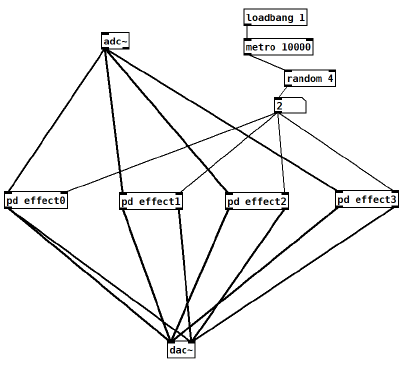No edit summary |
No edit summary |
||
| Line 19: | Line 19: | ||
==Demo== | ==Demo== | ||
{{#ev:youtube|NXBNfwUnVE4|600|left|testing the fiddleing surface|frame}} | {{#ev:youtube|NXBNfwUnVE4|600|left|testing the fiddleing surface|frame}} | ||
==Discussion== | ==Discussion== | ||
Revision as of 18:39, 12 October 2019
Concept
Fiddleing Surface
The in 2016 upcoming Fidget Cube is a device that supports different tangible areas.The idea of adding an additional audible level led me to a design that I call "Fiddleing Surface". It consists of different tactile media which are connected by a wooden frame. The pickup is fixed to the wooden frame and connected to a Raspberry hidden by the construction. A special PD-Patch is
Methods
For the audio processing I combined different effects and filters. I used
- reverb (echo)
- pitch
Implementation in Pure Data
My sketch consists out of a main sketch that is directing several subpatches. Therefore new effects can be easily added to the program.
Demo
Discussion
I wanted to build a device that uses the piezo microphone and a raspberry to create relaxing mood with sounds and tactile media. The result is a first feasible approach. In my opinion listening to the device is surprisingly immersive. But that's a purely subjective assessment. For further improvement, it would be necessary to develop a user study that verifies the benefits.
- The device is too big and difficult to transport. The sound processing should be optimized to a system on a chip, do that the whole processing could fit in a regular fidget cube.
- The audio processing doesn't show the potential yet. There a still too many random values. Instead of randomness I would like to use more input signals from the user. I think it would be cool to add harmonics dependend on the orientation of the device, which can be measured by a gyroscope.

